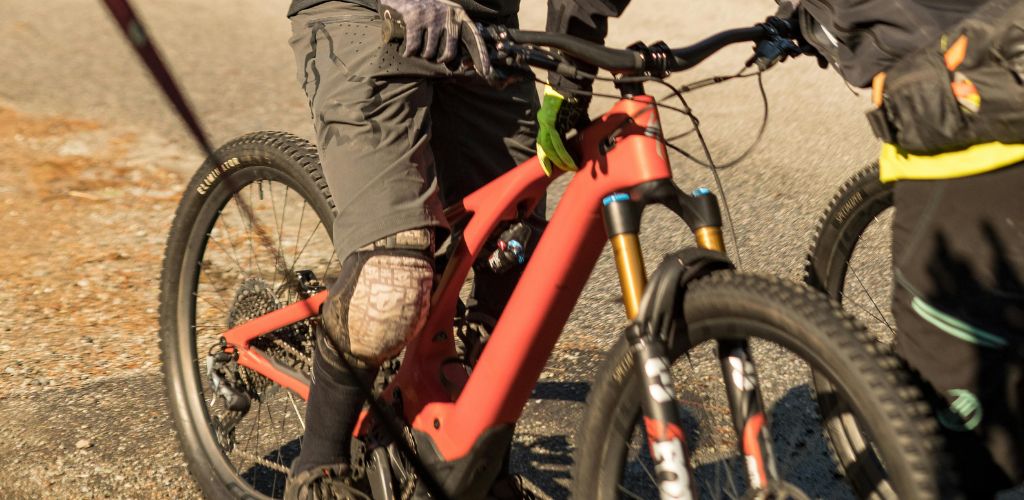So you’re getting into mountain biking, but you’re still unravelling all the weird terms huh?
I’ve got you!
Have you ever heard the term “G-Out” thrown around on the trails or in biking forums? Let’s get right into what this term means in the world of mountain biking, and why it’s a crucial concept for riders of all levels to understand.
The Basics of G-Out
G-Out, short for “gravity out,” is a term used to describe a situation where a mountain biker experiences a sudden compression of their bike’s suspension.
This typically happens when you’re riding fast over a dip or into a compression in the terrain, such as a gully or a steep sudden transition from a downhill to an uphill section.
The force of gravity, combined with your momentum, compresses the suspension to its limits or “bottoms out.” It’s like a sudden, intense hug to your bike from gravity itself!
Understanding G-Out is vital because it affects your control and comfort while riding.
A severe G-Out can be jarring and can momentarily throw you off balance, which, in a high-speed situation, could lead to a crash. It also tests the limits of your bike’s suspension, potentially leading to mechanical issues if your bike isn’t set up correctly or if it’s subjected to frequent, harsh G-Outs.

Suspension and Bike Setup
The key to managing G-Outs lies in your bike’s suspension setup. A well-tuned suspension system can absorb a lot of the impact, making G-Outs less severe. Here are a few tips:
- Spring Rate or Air Pressure: This is the baseline setting for how soft or hard your suspension feels. If you’re frequently experiencing harsh G-Outs, you might need to increase your spring rate or air pressure. However, be careful not to overdo it as a too stiff suspension can make your ride harsh and less grippy on rough trails.
- Compression Damping: This controls how quickly your suspension compresses. Adding more compression damping can help manage G-Outs by slowing down the rate at which your suspension compresses under big impacts.
- Rebound Damping: While this mainly affects how quickly your suspension returns after being compressed, it’s still important. If your rebound is too fast, your bike might feel like it’s bouncing back too quickly after a G-Out, which can be unsettling.
- Sag: This is the amount your suspension compresses under your weight when you’re just sitting on the bike. Proper sag setting ensures your suspension is in the right part of its travel to absorb impacts like G-Outs effectively.
Riding Technique
Your technique also plays a crucial role in managing G-Outs. Here’s how:
- Body Position: Stay loose and let your arms and legs act as additional suspension. When you see a G-Out coming, bend your knees and elbows more and push your hips back. This stance helps you absorb the impact.
- Line Choice: Sometimes, the best way to handle a G-Out is to avoid the worst of it. Look ahead and try to choose a line that lessens the severity of the compression.
- Speed Management: It’s often about finding the right balance. Too fast and the G-Out will be more severe, too slow and you might not carry enough momentum through. Adjust your speed according to the terrain and your comfort level.
Advanced Considerations
For the more technically inclined, here are some advanced aspects to think about:
- Suspension Tuning: Custom tuning your suspension can make a significant difference. This often involves replacing internal components or fluids to better suit your weight, riding style, and typical terrain.
- Frame Design: Different mountain bikes are designed with varying suspension systems that handle G-Outs differently. For instance, bikes with more progressive suspension designs are better at handling big compressions without bottoming out.
- Tire Pressure and Choice: While primarily a factor for traction and rolling resistance, tire choice and pressure can also influence how your bike handles G-Outs. A slightly softer tire can absorb more of the impact, but again, balance is key to avoid pinch flats or rim damage.
The bottom line…
In conclusion, G-Out is a phenomenon that every mountain biker encounters.
By understanding what it is, tweaking your bike setup, honing your riding technique, and considering advanced aspects, you can handle G-Outs effectively, enhancing your ride quality and overall mountain biking experience.
Keep shredding those trails, and stay safe out there!

